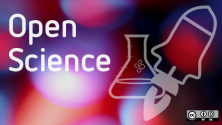Looking for a way to contribute to OpenStack? Coding is just one of the available options. In fact, there are several non-coding activities like design, documentation, marketing and internationalization. For more details about this, go ahead and check out the how to contribute wiki page.
Every contribution is welcome and what you decide to do depends on what you have to offer. That is, your knowledge and your time.
Having so many contribution options is a relief! Once you feel part of a community, you can keep tuned with them in a more relaxed way and still do useful work. In the last couple of months I didn’t have enough time to get immersed in bug fixing (neither in updating my blog… as you may notice!), but I didn’t want to lose contact with all the great people I met during my internship, so I kept working on simpler bug tasks and I started contributing to the internationalization (i18n) team.
What is internationalization (i18n) and globalization (l10n)?
From the Wiki,
Internationalization is the process of designing a software application so that it can be adapted to various languages and regions without engineering changes. Localization is the process of adapting internationalized software for a specific region or language by adding locale-specific components and translating text.
It’s not only about translating, is making the product more familiar to different cultures. And this incredibly improves the user experience!
Why contribute to i18n?
So… why I chose i18n?
One of my main goals since I started contributing to open-source in general was to make the software and documentation available for those who doesn’t speak English. Being a software developer usually make you feel more comfortable with English than other language, but for a lot of people this is not the case.
How to contribute to OpenStack i18n?
What we can do to make things easier for non English speakers?
A few months ago I decided to join i18n efforts in OpenStack. Thanks to all the hard work of many contributors, we managed to set up several languages teams including Spanish, Portuguese, Italian, French, Russian, Japanese and some more. Check them out in the OpenStack’s i18n Team wiki page.
If you want to contribute with translations, is quite easy to get started.
First of all, make sure to add your name in the wiki. We want to know about you! Then, as we are using Transifex for translations, you will have to create a translator account. Lastly, select the translation project you would like to contribute to. You can help translating manuals, wikis and the strings of the software itself.
Transifex dashboard is quite easy to use. You can also contribute with the translation tools, but that is a coding task so I won’t get into details here. There is still a lot of work to do, so if you see that your language is missing, or you think there is something that could be improved in some way, please let the i18n community know about that.
You can get in touch through the OpenStack i18n mail list or through IRC in irc.freenode.org at #openstack-translation.
Other translation efforts not related to OpenStack that you might want to try
I started contributing to GNOME’s i18n team. GNOME has always been my preferred desktop environment and, as a user, I felt that enhancing the translations was an important thing to do and something I could help with. GNOME is a great place to start with i18n since they have a great amount of documentation and specific software for this. Consider that user experience is one of the highest priorities in GNOME, so they have experience with it and there is a lot to learn from this community in this regard. For more details, check out GNOME's translation project.
Some time after that, I started this blog and decided to write my blog posts in the two languages I speak: my native Spanish and English (which, by the way, has improved a lot with all the feedback I received… please keep me updated!). I can say that it totally worth the effort. If you have a blog, give it a try!
Translatable or not?
I’m really interested in knowing your opinions about technical words. As a non-native English speaker, do you think that terms as, for example, "floating IPs", "handler" or "fork", should be translated? Does a translation improves user experience or just make things confusing?
Ideas are welcome!
Let me know what you think about this and, of course, if you have any doubt don’t hesitate in contacting me.
Originally published on my personal blog. Republished under Creative Commons.






1 Comment